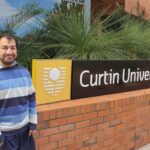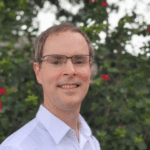The Order of Australia and recent Mining Hall of Fame recipient is the third.
John de Laeter has a list of achievements that could stretch into the stars and now the leading astrophysicist, nuclear physicist, educator and researcher has been inducted into the WA Science Hall of Fame.
The Order of Australia and recent Mining Hall of Fame recipient is the third entrant appointed by the Premier in recognition of his long-standing commitment and outstanding contribution to science in WA.
Professor de Laeter said it was a surprising thrill to join the Nobel Prize-winning pair inducted last year.
‘I’m pleased with what I’ve been able to achieve, I haven’t done anything earth shattering but I’ve been working away at problems over a period of time and have added some pieces to the puzzle.’
Those pieces, however, are no small feat.
Since first studying in the 1950s Professor de Laeter has corrected the atomic weights of 16 elements, mapped the geological ages of WA’s rocks to help mining exploration, found a safe storage for nuclear waste and helped establish Scitech, Technology Park, the Science and Mathematics Education Centre (SMEC) and the Gravity Discovery Centre.
‘When I started science in WA was pretty small, little bits of pieces everywhere and overall an insignificant set up,’ he said.
‘With all the work being done now there’s absolutely no comparison.
‘The talent of the winners and finalists in the Science Awards, and even the existence of the awards is an indication of the quality we have.
‘The future is very bright.’
Professor de Laeter said winning the bid for the international Square Kilometre Array telescope program would make WA’s future even brighter.
‘It would be the greatest thing in science to ever happen to WA,’ he said.
‘WA would be the world’s leading centre for radio astronomy.
‘Curtin is making a very big contribution to the application with the recent opening of the Institute of Radio Astronomy (CIRA), which is also a landmark in Curtin’s endeavours.’
The former Head of the Department of Physics at the WA Institute of Technology (now Curtin) said scientists had a responsibility to work in the community.
‘Coming from being a science teacher, education is very important to me,’ he said.
‘Since it started in 1975, SMEC has grown into the most prestigious and preeminent science education centre in the world.
‘I feel very pleased I was involved with Scitech, it reaches out to all areas and is a WA icon in my opinion.’
Reflecting on his accomplished career, Professor de Laeter said the most important parts of science were friends and fun.
‘Science is very exciting and very hard work – you’re solving problems that have never been tested and have the opportunity to break fresh ground.
‘I’ve made many good friends from across the world and been to most countries for conferences and speeches.
‘I have had a very fortunate life – I went from science teacher to researcher and never regretted anything.’


